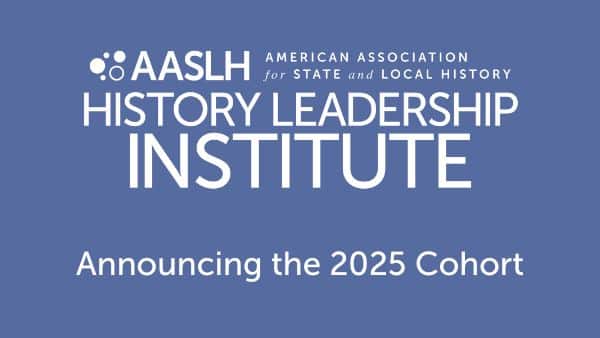
This blog was originally posted on Once Upon a Museum. It is reposted here with permission from the author.
Major benefit of having class/discussions/networking events online: you can do so in your bed, in pajamas. This week, as I was simultaneously researching for class and watching the first Syracuse basketball game of the season, I was also participating in a twitter chat hosted by the American Association for State and Local History (@AASLH). I had never participated in a twitter chat before, but the topic was issues for emerging professionals in the field – something I felt I was at least a little familiar with. In addition, taking [a Museums & Digital Technology] class has made me 110% more confident in my twitter skills. Before #mstdtech, my tweets were mostly dumb inside jokes that tagged close personal friends. I never realized that in addition to a social network, Twitter could also be a professional network. By asking us to tweet about the field on a regular basis, my twitter account has become an extremely useful tool. I’m no longer intimidated to tweet @ museum professionals, and I feel like I’m on top of what is actually happening in the field – in real time!
Back to the #aaslhchat – it was a really great experience. It was only an hour, and it went by super quick! Some of the topics brought up were things that we have discussed both in this class and other Museum Studies classes. The chat also offered a critique of education in public history, Museum Studies, and other related programs.
For example: The first question asked by AASLH was “What skills are necessary or helpful for a career in state and local history?” and the second question followed up with “Which of these skills aren’t developed in graduate school?” Answers for the second question varied: everything from grant writing, to social media, to budgeting. One answer that was particularly relevant to our class (and #mstdsm) this semester:

I definitely agree that social media platforms are not all the same, and need to be explored in-depth. Platforms like Facebook, Instagram, and Twitter are vital to communication today, and therefore are vital to museums. In order to market your museum, you need to be comfortable with social media, and this is especially important for those of us who want to work in small museums. One of the articles for this week’s class, The Real Reason Some Nonprofits Suck at Digital, does a great job of explaining why if you’re ignoring digital, or labeling it as “other,” you have a big problem.
Another example of something relevant to our program here at GWU – what should be taught in grad school? (See image below). Should students be encouraged to take a “focus” or “track,” or should they be able to take a broad overview of different topics that are relevant to the field? In our program you are labeled as a Collections student, a Management student, a Design/Exhibitions student, or a Curatorial student from the moment you walk through the door. We do have some flexibility as far as elective courses, and I would argue that the program does offer enough flexibility for you to get a good overview of the field. But, is the program doing students a disservice by setting you on a “track?” I’ve personally felt pressure to follow the management track and additionally take the non-profit management certificate, because this is what a lot of others have done before me. How do we find that balance between enough structure and enough flexibility?

The last question asked by AASLH was “What can EHPs/ EMPs do outside of school to learn valuable professional skills?” An important question for EMPs, as we are always looking for that magic combination of skills that will get us that perfect job. Answers: webinars, workshops, conventions, writing, marketing skills, and even any non-history/museum jobs can promote great professional skills! I was surprised & happy to see that many of the folks participating credited their experience waiting tables, RA-ing, and working retail as important parts of their development.
Overall, I’m really happy I participated in this opportunity, and I will definitely participate in related twitter chats more in the future. It was a fun, interesting discussion, and I also found some great new people to follow.

Stephanie is a second year MA student in the Museum Studies program at George Washington University. Her blog, Once Upon a Museum was started this year for the class Museums & Digital Technology, taught by Professor Susan Cairns.


